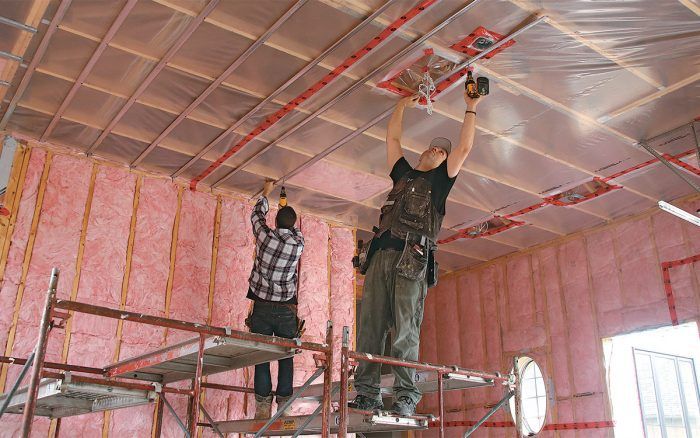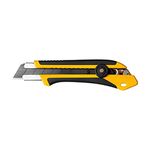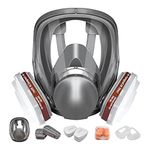Six Rules for Polyethylene
Martin Holladay reconsiders the use of interior plastic sheeting as a vapor or air barrier.

In the 1970s and 1980s, the practice of installing polyethylene on the interior side of wood-framed walls became common in much of the U.S. These days, however, installing interior poly is nowhere near as common as it used to be; the practice has all but disappeared in the U.S. outside of Minnesota and Alaska.
In Canada, however, the use of interior polyethylene is alive and well.
Why did American builders abandon interior polyethylene? There were two main reasons:
- In the late 1990s, there were several well-publicized clusters of building failures — notably, wet-wall problems in North Carolina and Ohio — in which polyethylene was implicated as a contributing factor.
- Several well-known building scientists, including Joseph Lstiburek, warned builders that the use of interior polyethylene was risky in homes with air conditioning.
The roller-coaster history of interior polyethylene leaves many builders, especially Canadian builders, with lingering questions. Here at GBA, we occasionally get questions from Canadians who ask, “Should I still be using interior polyethylene? Everyone up here uses it, and building inspectors want to see it.”
These are good questions. It’s time for a fresh look at the issue of interior polyethylene.
A brief look in the rear-view mirror
Why did cold-climate builders begin installing interior polyethylene in the 1970s? Back then, the standard answer was, “Polyethylene is a vapor barrier. Walls need interior vapor barriers to prevent the outward flow of moisture during the winter.”
In fact, carefully installed interior polyethylene often improved the performance of cold-climate walls. However, the main reason that interior polyethylene helped wall performance was because the polyethylene was installed as an air barrier. Even back in the 1970s and 1980s, conscientious Canadian builders were installing polyethylene with taped seams or seams sealed with Tremco acoustical sealant. Whether the builders knew what they were doing or not, they were effectively reducing air movement through their walls. This air-leakage benefit was far more useful than any changes in the rate of outward vapor diffusion. (For more information on vapor diffusion, see “All About Vapor Diffusion.”)
Although interior polyethylene was sold as a way to limit vapor diffusion, it was also acting as an air barrier. Canadian builders ended up with a product that worked — more or less — but not for the reasons stated by most builders. To this day, many builders confuse vapor barriers with air barriers, and this confusion complicates any assessment of the value of interior polyethylene.
Famous failures
Two of the most well-publicized polyethylene-related failures were the EIFS crisis of 1995-1996 in Wilmington, North Carolina, and the inward solar vapor drive problems of 1999 in Mason, Ohio.
The main cause of the wet-wall problems in Wilmington, North Carolina was a gross failure by builders to flash window rough openings. These were water-intrusion problems. That said, there were several compounding factors that accelerated the rot in these homes. Most of the problems occurred in EIFS-clad homes — in part because EIFS-clad walls dry very, very, slowly to the exterior. The walls that dried the most slowly of all not only had EIFS on the exterior, they also had polyethylene on the interior. These walls were prevented from drying out in either direction. The EIFS cladding prevented outward drying, and the polyethylene prevented inward drying.
When the role of polyethylene in the Wilmington failures was publicized in builders’ magazines, many builders began to associate interior polyethylene with wet-wall problems.
A few years later, in 1999, there was a large cluster of wall failures in Mason, Ohio. All of the affected houses were built by a company called Zaring Homes. Moisture entered the walls of dozens of homes — all of which were air-conditioned during the summer, and all of which had walls with interior polyethylene — through a phenomenon called inward solar vapor drive. When the solar-driven moisture hit the cool polyethylene, the result was condensation, mold, and rot. Needless to say, builders who read about these failures began to realize that interior polyethylene was not an unalloyed blessing.
Do U.S. codes require interior polyethylene?
Building codes in the U.S. do not mandate the use of polyethylene on the interior side of walls or ceilings — in any climate zone.
Instead, most building codes required builders in cold climates (Climate Zones 5, 6, 7, 8, and Marine Zone 4) to have an interior vapor retarder (not a vapor barrier) on most above-grade walls. Either kraft facing or vapor-retarder paint fulfills this code requirement.
Martin’s six rules for polyethylene
Rule #1: Unless you’re building in Canada or Alaska, don’t install interior polyethylene on walls. To control the outward flow of water vapor through above-grade walls, cold-climate builders in the U.S. can use kraft facing, vapor-barrier paint, or a smart vapor retarder like MemBrain. (For more information on smart vapor retarders, see “Smart Vapor Retarders for Walls and Roofs.”).
Rule #2: If a house is expected to use air conditioning for more than four weeks a year, the house shouldn’t have any interior polyethylene on the walls.
Rule #3: If you’re Canadian, it’s probably OK to install interior polyethylene on walls, unless:
(a) your wall includes exterior rigid foam, in which case it’s best to skip the interior polyethylene (for more information on this issue, see “Calculating the Minimum Thickness of Rigid Foam Sheathing”) or
(b) you live in southern Ontario or the warmest parts of coastal British Columbia. In these warm regions of Canada (regions with under 4000 heating degree days), it’s safer to install a smart vapor retarder like MemBrain than polyethylene. (While vapor-retarder paint is a perfectly acceptable vapor retarder for walls in southern Ontario, many Canadian building inspectors prefer to see the installation of a product that comes in a roll and looks a little like polyethylene — hence the recommendation to use MemBrain.)
Rule #4: It’s never a good idea to install any polyethylene on the interior side of a basement wall, in any climate zone. You don’t want polyethylene between the concrete and a stud wall; nor do you want any polyethylene between a stud wall and interior drywall. For information on safe ways to insulate a basement wall, see “How to Insulate a Basement Wall.”
Rule #5. If you live in a cold climate (Zones 5 through 8), installing polyethylene between the ceiling drywall and the insulation on the floor of a vented unconditioned attic is harmless but unnecessary. Instead of worrying about a vapor barrier at this location, pay attention to airtightness. If you can make your ceiling airtight, you’ve solved 95% of any potential moisture issues.
Rule #6: Concrete slab foundations and basement slabs need a layer of polyethylene directly under the concrete. Of all the uses for polyethylene, this one makes the most sense. You don’t want any sand, crushed stone, or rigid foam between the concrete and the polyethylene — the polyethylene belongs directly under the concrete. (For more information on this issue, see “Polyethylene Under Concrete Slabs.”)
Analyze your goals
If you are a Canadian builder who is contemplating the use of interior polyethylene, you need to analyze your motives and goals. It may be helpful to answer these three questions:
- Am I installing interior polyethylene to limit outward vapor diffusion? If so, polyethylene may well be the best product to use — especially if you live in the colder sections of Canada. That said, it’s important to remember that air leaks usually introduce more interior moisture into wall assemblies than vapor diffusion, so it’s always essential to pay attention to airtightness.
- Am I installing interior polyethylene to reduce air leakage? If so, you should consider using an easier way to establish an air barrier — for example, by taping the seams of your exterior sheathing.
- Am I installing interior polyethylene simply to satisfy the local building inspector? If so, you might want to negotiate with your inspector to see if an alternate approach is acceptable — especially if your wall includes exterior rigid foam.
Breaking the rules
What if you live in a house that breaks one or more of the rules listed above — for example, a house with interior polyethylene that also has exterior rigid foam, or a house with interior polyethylene that is air-conditioned for most of the summer?
Don’t despair. Most houses that break the rules don’t have rot. To learn more, see these two articles: “Rethinking the Rules on Minimum Foam Thickness” and “The Exterior Rigid Foam is Too Thin!”
Originally published on GreenBuildingAdvisor.com.
Fine Homebuilding Recommended Products
Fine Homebuilding receives a commission for items purchased through links on this site, including Amazon Associates and other affiliate advertising programs.

Utility Knife

Respirator Mask

Nitrile Work Gloves





